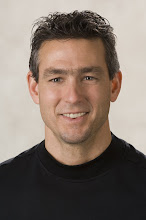Further, the complication and death rates for men are higher than for women.
But wouldn't you know it ... one of the best ways to avoid osteoporosis is to maintain a regular resistance program! If you're not regularly exercising, we can certainly help you with that. Additionally, now that we're basking in 15+ hours of daylight, your long slow cardio event can help there too!
Because if you're following our prescribed cardiovascular programming recommendations your weekly cardio efforts will include:
- One short duration, high intensity event (SDHI)
- Two moderate duration, moderate intensity events (MDMD)
- One long duration, low intensity event (LDLI)
Sundays, early mornings, and late evenings are perfect times to get out and complete that Long Duration, Low Intensity (LDLI) event.
But just what, exactly, is Long Duration? And Low Intensity?
Generally, you'll want the long duration, low exercise event to be measured in hours, preferably closer to 2 or 3. But it shouldn't feel exhausting.
You'll want to pick up your heart rate just a bit, but not so much that you're really challenging your circulatory or respiratory systems. The increased blood flow provides much needed nutrient rich blood to your muscles, bones, and joints.
Under the stress of more intense exercise (resistance or cardio), muscle fibers, tendons, and ligaments all get damaged a bit. This is by design, as the rebuilding/recovery that follows makes them stronger, longer, or leaner. It also increases bone density, which is why it's particularly effective in avoiding osteoporosis.
Additionally, conversion of energy sources to energy produces a toxic waste product called lactic acid during exercise. The more intense you exercise, the more lactic acid you produce. This waste product is the primary reason why you may feel sore after resistance exercise: your body doesn't like the lactic acid hanging around muscle groups. Stretching can help help eliminate lactic acid buildup, but we mostly depend on the circulatory system to flush it out.
Your LDLI then, provides an important niche role in assisting with your recovery: upside nutrition for your recovering tissues, and increased blood flow to remove lactic acid waste product.
If you have a heart rate monitor we can tell you exactly what range to be in for this exercise.
Or ...
Or ...
- You can enroll in our Targeted Cardio Program and get one for free!;
- You can use the perceived exertion scale;
- You can use this handy minute rule tip from RealAge.com.
Exactly what you do for your Weekly LDLI will depend enormously on your current fitness level, but here are a few suggestions.
Walk. The lakes, the rivers, and the bridges all have excellent separation from traffic. And the intensity of a brisk walk is exactly in the right range for LDLI exercise. Again, check this handy tip from RealAge to gauge intensity.
Nordic Walk. If you want to do even than better than just walking, start nordic walking. Long popular with the skiers for summertime training, nordic walking has a leg up on just plain walking in that with the use of hiking poles you:
- Engage your entire body in the exercise
- Improve Core Strength and Stability (lower back and abdominals)
- Increase Shoulder and Arm muscular endurance
- Improve the safety and stability of your walk, especially for geriatrics
You can stick to the urban trails, or get onto the many city and county park hiking trails (Hennepin County Parks, Ramsey County Parks). You can get your hiking poles at REI, or one of the many area cross county shops: Finn Sisu in St. Paul, or Gear West in Long Lake.
Ride your Bike. Check out my May 7th blog entry on commuting by bike to work!

